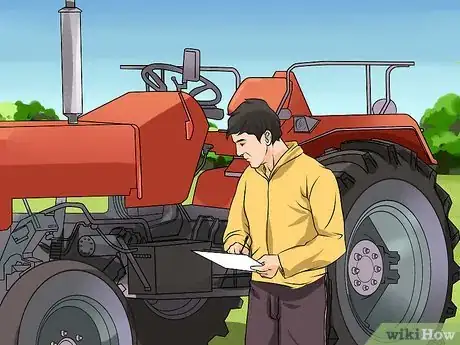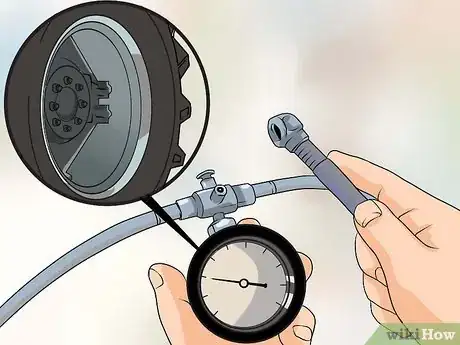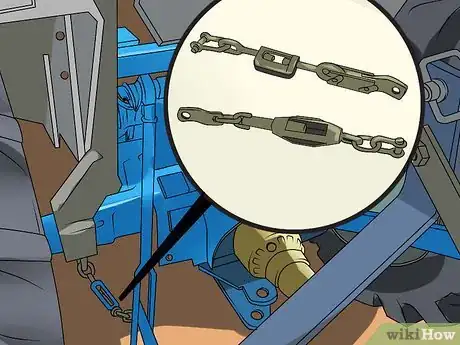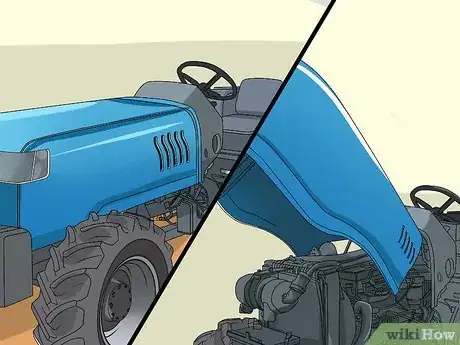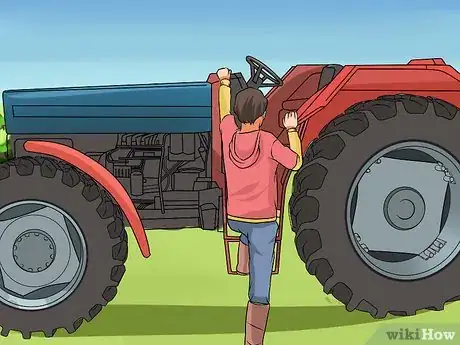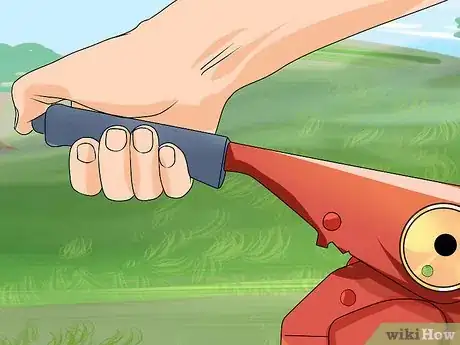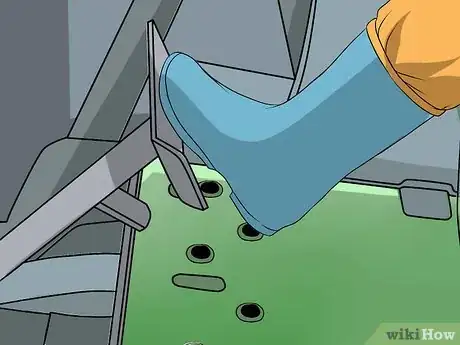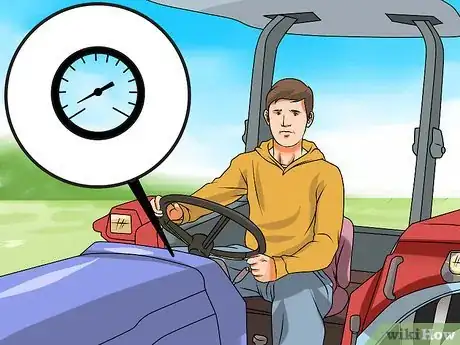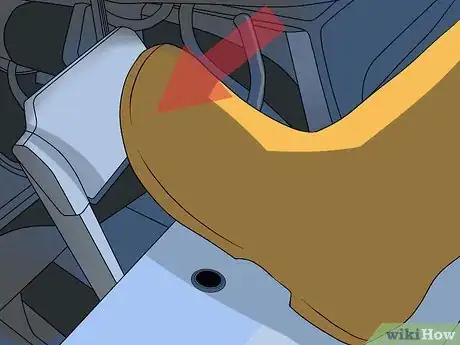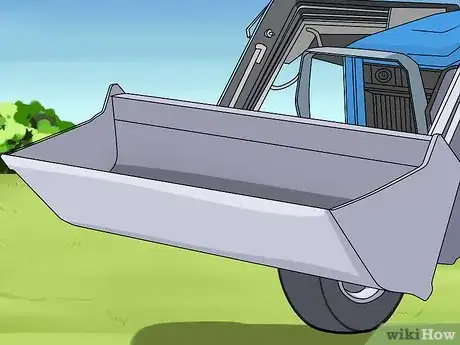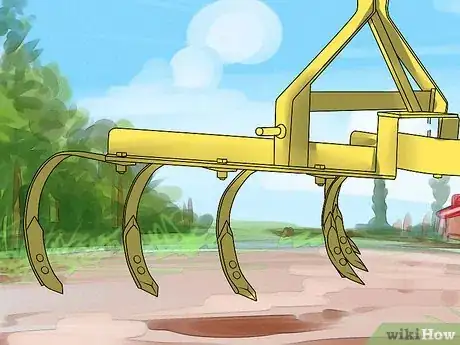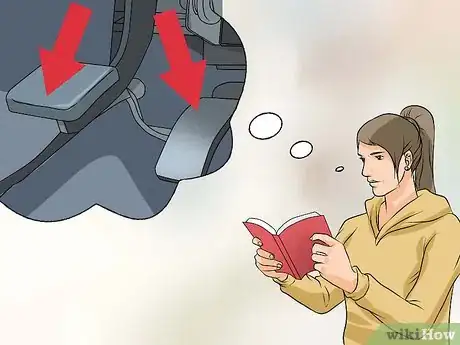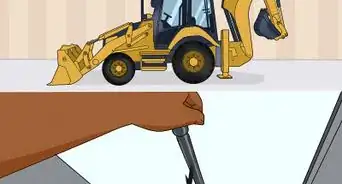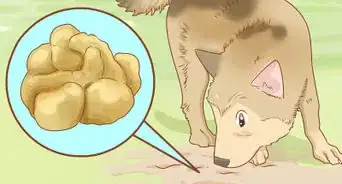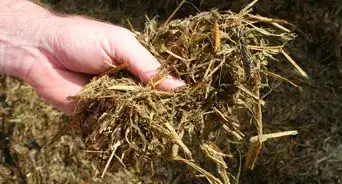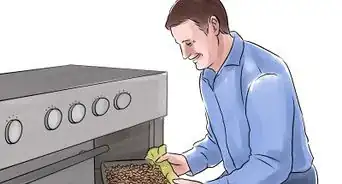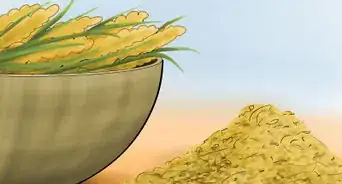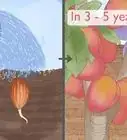wikiHow is a “wiki,” similar to Wikipedia, which means that many of our articles are co-written by multiple authors. To create this article, 31 people, some anonymous, worked to edit and improve it over time.
There are 7 references cited in this article, which can be found at the bottom of the page.
wikiHow marks an article as reader-approved once it receives enough positive feedback. In this case, several readers have written to tell us that this article was helpful to them, earning it our reader-approved status.
This article has been viewed 315,331 times.
Learn more...
Tractors come in all sizes with different horsepower engines. Tractors make farming easier and more efficient. You can attach a plow or blower and use your tractor to remove snow, attach a bucket and move wood, stone or mulch, use the forks to lift large logs, small dead trees and other heavy objects, and even use your tractor to mow your lawn. It's a versatile and essential rural tool.
Steps
Checking the Tractor
-
1Look for tractor safety issues. Walk around your tractor doing an inspection before climbing on. Loose wheel lugs, nuts or bolts may need periodic tightening.
-
2Check your tractor's tire pressure. Low pressure in one or more tires may cause instability and create a safety hazard. If you're not driving your tractor every day, make it a routine to give the tires a quick once-over so you know they're in good shape before you get way out in a field.[1]Advertisement
-
3Inspect your stabilizer chains to ensure they are properly secured. Do this when your tractor attachments are behind the tractor.[2]
-
4Open the hood of your tractor. Check the cooling system, radiator and battery levels to make sure they are in the proper range.Make sure you have enough oil and fuel to complete the job or task at hand.
-
5Be safe at all times. Wear good-quality boots with gripping soles, and keep any long hair tied back. Avoid dangling jewelry that could become caught in moving machinery, and avoid wearing loose or baggy clothing while operating a tractor. Always climb into the tractor using the proper hand holds.
Driving the Tractor
-
1Climb up into the tractor's seat. Familiarize yourself with the controls and find the clutch. Set the seat so you can reach the steering wheel, throttle, and other controls easily with your hands and feet.
- Wear your seatbelt any time you're going to be around other vehicles. In the field, while it may seem like common sense to buckle your safety belt, you'll find almost no farmers strapping themselves in. More likely than an accident in your tractor will be the need to quickly turn off the engine and hop out and do something that needs doing. The safety roll bar will help to prevent serious injury. Practice good tractor safety and drive safely.
-
2Press the clutch pedal down to the floor with your left foot. You want to be sure the transmission is in neutral as you turn it over.
-
3Engage the break with your right foot. Turn the key forward to start the engine. When it turns over, drop the throttle slightly (without killing it) to let the engine warm up a little. If you jump straight from turning it over to driving, you'll likely stall.[3]
-
4To drive, release the tractor's parking break. Continue holding the clutch to the tractor floor and put the transmission into a first gear.
-
5Slowly lift your foot off the clutch. Just as with any manual transmission, you want to be slow and smooth as you let the clutch out. It's a lot easier since you don't have to be actively pushing the gas. Keep the throttle at a low setting and take your foot off the brake.[4]
-
6Maintain a uniformly slow speed. Tractors aren't made for going particularly fast, they're made for durability and power. Don't push it. Go slowly, treating turns, curves, and hills with special caution.[5]
- Especially if you're using attachments and other hardware, go extremely slowly and use precaution when executing turns.
-
7To stop the tractor, press the clutch to the floor completely. Switch the gears to neutral and set the parking brake. Slow the throttle. Put all implements on the ground. Turn the tractor key to the off position to stop the tractor engine.[6]
- If you are parked on a steep hill, you will want to leave the tractor in a low gear to keep it from rolling in case the parking brake fails.
Using the Tractor
-
1Make sure all operators are trained and familiar with the tractor. For farm hands or employees younger than 16, familiarize yourself with OSHA labor standards regarding child labor. Some jobs involving heavy machinery are too dangerous to be performed by less experienced workers.
- "HO/A #1 The FLSA prohibits youth under 16 years of age from operating a tractor of over 20 PTO (power-take-off) horsepower, and from connecting or disconnecting implements or parts to such a tractor."[7]
- In some places, it's necessary to obtain a registration to drive your tractor on the road (the UK and Australia, for example) while many other regions forego registration as long as your tractor displays reflective caution tape and is clearly visible.
-
2Outfit your tractor with a mowing attachment. For heavy-duty weed control and maintenance of rough areas of your property, it's useful to get a mowing attachment to eliminate invasive weeds and brush.
-
3Attach a tractor bucket and learn to use it. Most Kubotas and other common smaller tractors have a wide variety of attachments, including buckets that will make your tractor into a kind of small-scale backhoe. You can haul brush and other junk around your property.[8]
- Follow proper driving safety when adding a bucket. Never drive with the bucket in full "up" position, but always remember to raise it into the drive position so it's not dragging in the mud.
-
4Use cultivator attachments on larger tractors to plow for planting. If you've got a row to hoe, the job is much easier with a cultivator to break up the dirt and help plant your crop.
-
5Make sure any attachments heavier than the tractor itself have independent brakes. If you're using tractor attachments, you'll need to be especially careful to drive extremely carefully and use the guidelines outlined in the owner's manual for each implement, attachment, or device. Make sure that heavier attachments are outfitted with independent brakes in good working condition, and learn to use them.
-
6Hitch all attachments properly. Make sure to follow proper safety precautions while hitching your tractor to wagons or other farming implements:
- Make sure that the area in front and behind, making sure especially that no one is behind the tractor
- Back the tractor up slowly
- Practice a safe stop, applying the emergency brake
- Put the transmission in neutral
- Dismount the tractor and hitch up[9]
-
7Learn how to get extra traction. Sometimes you may have to operate the tractor in environments with poor traction, such as snow or deep mud, resulting in the machine becoming stuck.
- Many tractors have independent brakes for the left and right back wheels. Try applying some brake to the slipping wheel.
- Alternatively, try locking the rear differential (often a foot pedal activated by your right heel). This forces both back wheels to turn at the same speed, which can be useful if one wheel has traction and the other doesn't, or if you're driving across a slope. Be aware that doing this will make cornering difficult, as the tractor will want to drive in a straight line.
- Put the tractor in four-wheel-drive if equipped. This can be especially useful if you have a heavily loaded bucket. Make sure to turn off the four-wheel-drive on hard surfaces, as it will cause increased wear on the transmission.
Community Q&A
-
QuestionWhat gear should be used when climbing a hilly region with a high load?
 Community AnswerYou should use a lower gear in order to go up hills with high loads. At lower gearing, the tractor is able to produce more torque, which is essential in transporting heavy loads. Depending on how many gears the tractor has, you should go no higher than 3rd gear. If the tractor has multiple ranges, use low range.
Community AnswerYou should use a lower gear in order to go up hills with high loads. At lower gearing, the tractor is able to produce more torque, which is essential in transporting heavy loads. Depending on how many gears the tractor has, you should go no higher than 3rd gear. If the tractor has multiple ranges, use low range. -
QuestionHow do I know which shifter is which?
 Community AnswerOn an older tractor, the PTO engagement is under the seat. The regular shifter is the longest one in the middle of the center console, and the hi-low range shifter is short and located on either side of the main shifter.
Community AnswerOn an older tractor, the PTO engagement is under the seat. The regular shifter is the longest one in the middle of the center console, and the hi-low range shifter is short and located on either side of the main shifter. -
QuestionHow do you slow the tractor down while in motion?
 Community AnswerIn order, use a combination of decreasing the throttle, down-shifting through gears and finally using the brakes to cease forward motion altogether. This approach works with the machine's components in their natural order, using the strongest systems first to do the most work and progressing down from there.
Community AnswerIn order, use a combination of decreasing the throttle, down-shifting through gears and finally using the brakes to cease forward motion altogether. This approach works with the machine's components in their natural order, using the strongest systems first to do the most work and progressing down from there.
Warnings
- Do not start your tractor's engine in an enclosed garage or shed. Exhaust gas contains carbon monoxide, which can be deadly.⧼thumbs_response⧽
- Never take chances or rush while operating your tractor.⧼thumbs_response⧽
- Never leave your tractor running and unattended.⧼thumbs_response⧽
- Never start a tractor unless you are in the tractor's seat. Accidents have occurred because tractors have accidentally run over their owners.⧼thumbs_response⧽
References
- ↑ https://www.youtube.com/watch?v=TzOQR2sPBH0
- ↑ http://www.hse.gov.uk/pubns/indg185.pdf
- ↑ https://www.youtube.com/watch?v=REyGFU754Ls
- ↑ https://careertrend.com/how-4813271-drive-farm-tractor.html
- ↑ https://careertrend.com/how-4813271-drive-farm-tractor.html
- ↑ https://careertrend.com/how-4813271-drive-farm-tractor.html
- ↑ https://www.osha.gov/SLTC/youth/agriculture/tractors.html
- ↑ https://www.youtube.com/watch?v=8sx9FH73vD4
- ↑ http://nasdonline.org/document/1659/d001534/a-guide-to-safe-farm-tractor-operation.html
About This Article
If you want to drive a tractor, press the clutch pedal down with your left foot and put the transmission in neutral, then press the break with your right foot. Once you’ve done that, turn the key to start the engine. Release the tractor’s parking brake while still holding the clutch, and put the transmission in first gear. Slowly lift your foot off the clutch, then take your foot off the brake. At this point, the tractor will start moving forward. Drive slowly, and use caution on turns, curves, and hills. To stop the tractor, press the clutch to the floor, switch the gears to neutral, and set the parking brake. Keep reading to learn about operating the tractor safely, including what you should wear!
